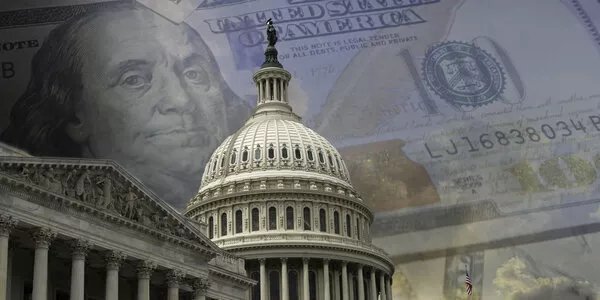
Weekly Update - The Scissors Effect
This year has seen an exceptional deterioration in public finances. Growth has collapsed and, with it, tax revenues. The International Monetary Fund expects a -4.4% fall in global output in 2020 with advanced economies (down -5.8%) particularly hard hit. In order to mitigate the negative impact on households and businesses, governments have borrowed heavily to fund welfare and investment programmes, in many cases offering to pay workers’ wages rather than see them lose their jobs. And with the numerator skyrocketing and the denominator plunging, debt-to-GDP ratios have surged. This week’s publication of the Global Debt Monitor report by the Institute of International Finance (IIF) offers some perspective on these trends.
According to the IIF, global debt (excluding the financial sector, to avoid double-counting when banks lend to businesses and households) hit an all-time high in Q3 2020 at $206.4 trillion (tn), up 9% over the past twelve months. This means that the aggregate debt-to-GDP ratio is up 32 percentage points (pp) from 241% to 273%. And with many economies likely to slip back into recession in Q4, the year-end figure is likely to look even more alarming. The bulk of the increase in debt has come from advanced economies where non-financial debt has reached $141.9tn, up $11.8tn in twelve months and taking the debt ratio up 38pp to 312% of GDP. The largest contribution to the increase in the developed world came from the US where debt rose $6.3tn, a rise of 47pp to 297% of GDP.
This year’s spike in global debt caps the fastest four-year increase on record – that is to say that economies have leveraged up, boosting demand in the near term at the expense of longer-term growth potential. This poses a problem for governments, businesses and households. In the previous cycle, from 2012 to 2016, non-US developed economies deleveraged, reducing their debt burden by $10.4tn only to see the debt-fuelled US economy outperform. Few governments have any appetite to reintroduce austerity programmes – on the contrary, the scale of this year’s recession has buttressed their determination to maintain stimulus policies. And there is little sign of any weakening in corporate thirst for debt – according to Moody’s, US corporate bond issuance is set to soar 45% to a record $2.5tn this year.
For now, the massive debt burden is made bearable by the combination of low key rates and sovereign yields with tight credit spreads. As shown on the chart below, debt service costs as a percentage of government revenue in advanced economies is set to fall even lower in coming years as maturing bonds of ever-increasing size are rolled over at lower yields. Of course, this has all been made possible by central banks’ easy monetary policy settings. Rates have been set close to zero or in negative territory while asset purchase programmes have pushed yields and credit spreads to historically low levels.
Bottom line. The US Federal Reserve and the European Central Bank have given every indication that easy money will remain the norm for years to come. This means that yields and spreads are unlikely to rise significantly in coming years, creating an environment of abundant liquidity in financial markets. While it is by no means clear that this will enable central banks to achieve their inflation targets, it will certainly alleviate the cost of servicing debt burdens. Of course, debt levels will have to be addressed at some point but the foreseeable policy settings push that day well into the future.
Read full article





